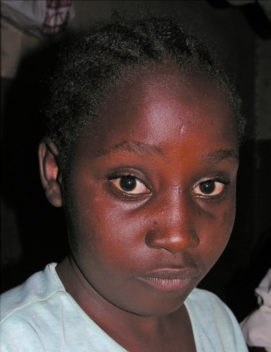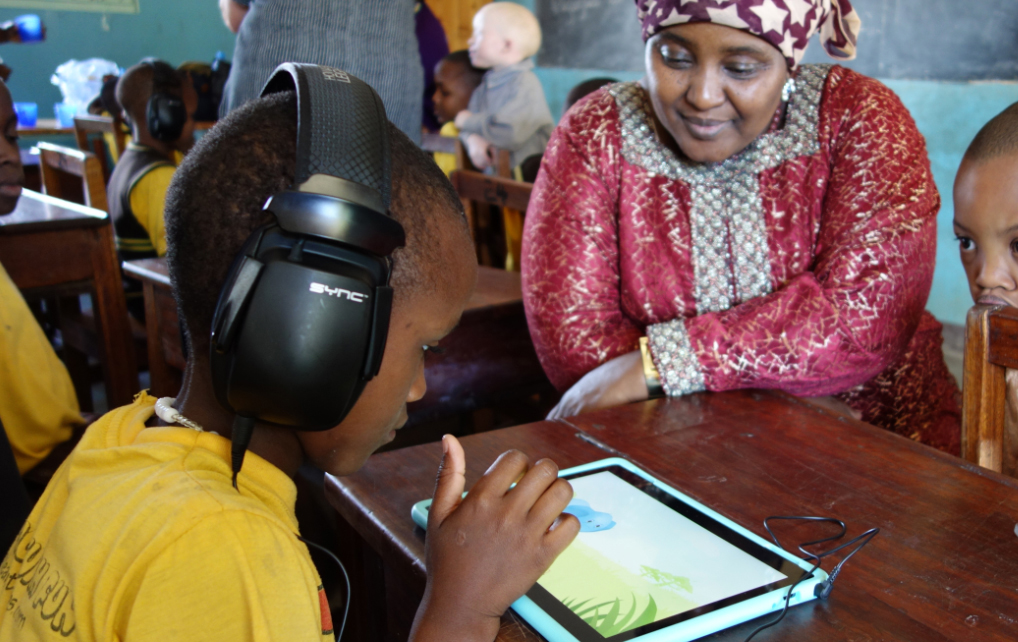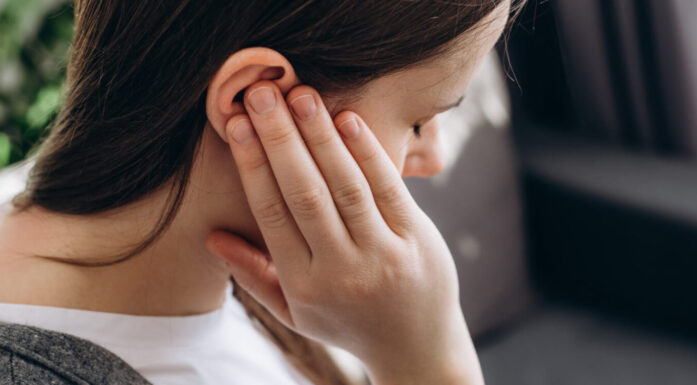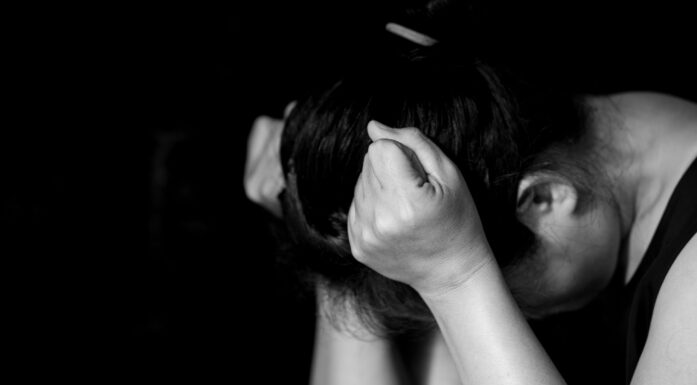A life-changing headset
A headset and a little electronics might be all it takes to enable nine-year-old Sharleen, who has hearing difficulties, to get an education and a life free of poverty. She is now getting help from Norwegian researchers.
“This project, that we’ve called I Hear You, is a little pet project of mine”, says Tone Berg, an acoustician and researcher at SINTEF.

Sharleen is nine years old and one of the children with moderate hearing difficulties who, thanks to the I Hear You project, can now get help to hear what is being said in class. Photo: SINTEF.
Since 2012, Berg and her colleagues have been working on an idea and technology aimed at helping hearing-impaired children in underdeveloped countries to get an education and avoid a life of isolation. A headset may be a life-changer for a child with a hearing impairment. However, a little technical adaptation is needed, combined with a local support staff who know how the technology should be applied. This is exactly what the SINTEF research team is aiming for.
The team recently returned home from Tanzania with good news following meetings with the public authorities, teachers and other potential partners. The meetings resulted in an agreement that opens the door to what SINTEF has been working towards for some time – permission to start a screening programme for children’s hearing and develop a simple hearing aid for schoolchildren in Tanzania. The aim is to develop a healthcare service that includes hearing tests for all children when they start school, as well as technical help for those with mild to moderate hearing impairments. The screening process, which is carried out using a tablet while the child is playing a game, is organised by local personnel.
Disability is synonymous with poverty
For the first time, the Research Council of Norway and NORAD have joined forces to award funding towards innovation in the fight against poverty. The project I Hear You is one of four projects now receiving such funding with the aim of working directly towards achieving three of the UN’s sustainability targets – to eradicate poverty, promote better health and ensure that all children get an education.
In large regions of the world, getting assistance with hearing cannot be taken for granted. Very few surveys of children’s hearing are carried out in Tanzania, either after birth or when they start school. The result is that children with low or moderate levels of hearing loss are not identified. They fall behind at school and often leave because they can’t keep up in the classroom. Moreover, those with hearing difficulties are often vulnerable to social isolation and become disengaged from their communities as they grow into adulthood. We are already aware that disabled children and adults face major challenges in Africa and, according to SINTEF’s living standards survey from a number of African countries, the chances of them ending up in poverty are very great. The surveys show that disabled people obtain very little benefit from broad-brush aid programmes and that they lose out in the competition for jobs, services and food.
Facts about hearing:
- According to figures from the WHO, five per cent of the world's population (360 million people) suffer from hearing loss. Thirty-two million of these are children.
- Most children suffering from hearing loss live in underdeveloped countries (WHO).
- According to the UN, it is very unlikely that we will achieve its sustainability targets if people with disabilities fail to get access to assistance and support.
- Disability is a greater problem in poor countries than it is in the West, in that a life in poverty often leads to disability.
- The WHO estimates that less than three per cent of people suffering with hearing loss have access to hearing aids, and that only two per cent of all such aids manufactured go to low-income countries.
Games can identify hearing loss
The aim of the project is to establish local hearing centres and access to technical aids, which will continue to operate after the research team has completed its project.
The I Hear You project is being led by Tone Øderud, a Senior Research Scientist at SINTEF. She has just shy of 20 years’ experience in the provision of technical aids, and the creation of jobs for disabled people in southern Africa. She has also established many local workshops that produce, adapt and repair technical aids for the disabled.
- Read more about SINTEF’s work in this article.
“As part, of this work, our aim is to develop a training programme for teachers and local health personnel in Tanzania, and to set up a local scheme to follow-up and maintain the head sets now being developed in Trondheim”, explains Øderud.
Using games technology
During the visit, the research team tested the first version of the screening tool, which is designed as a game that can be played on a tablet. It has been developed in collaboration with the well-known company Able Magic, which is a Norwegian company that has become specialised in games technology and digital teaching aids. Specialists in audiographic education from NTNU have also contributed with their input.
“The game has the property of being able rapidly to identify whether a child’s hearing is normal or not”, explains Berg, who is an acoustician. “In this way, we get a quick answer to whether or not we should proceed with a more advanced test”, she says. This makes it possible to test many children over a short period, and is a smart approach because class sizes in Tanzania can vary from fifty to more than one hundred pupils.
Hearing aids are too complicated
Berg has worked previously on projects linked to speech intelligibility in the classroom and acoustic navigation systems for the blind. She believes that this project is feasible without being too costly to maintain in practice.

Researcher Trond Vedul Tronstad demonstrates the screening technology, while employees at the school help to instruct the children in the use of the tablet. Photo: Tore Christian Bjørsvik Storholmen, SINTEF
“Our group is working with acoustics and is running several projects linked to providing assistance with hearing and hearing protection”, she says. “We specialise in the human ear and technology including speech intelligibility and acoustic navigation aids for the blind, as well as communications systems to help the blind, those with hearing difficulties and, not least, people working in noisy surroundings”, says Berg.
“Why have you chosen to develop a headset instead of a traditional hearing aid?
“We wanted to make something that is both simple and robust, and that can be easily repaired if it gets damaged”, says Berg. “This isn’t true of modern hearing aids, which are very advanced and require highly qualified personnel to adapt and maintain them”, she says.
Berg found that those working with hearing-impaired children were sceptical towards hearing aids. They preferred a headset without a lead and which boosted speech intelligibility.
“The hearing aids we’re used to in Norway are a relative advanced and vulnerable technology”, says Øderud, who has previous experience working in the development of technical aids for the disabled in Namibia and Zimbabwe. “Children grow out of the aids, and it’s rare to find support facilities in place for maintenance, repair and testing. So, it’s our job to introduce locally-based schemes for hearing tests and the training of teachers and health personnel who can carry out screening and the calibration process”, she says.
The necessity for the service and aids now being used is supported by figures from the WHO, which estimates that less than ten per cent of hearing aids in existence actually help their users.
The next part of the project will start with the training of local personnel and the development of the systems. This will help towards assessing the extent of hearing loss among children and young people using the new screening approach. While this is going on, SINTEF’s acoustic laboratories in Trondheim will be working to produce a prototype of the headset which can communicate with the screening tool. This will then enable the headset to be calibrated to a child’s hearing loss.
Facts about the project:
Technology development and screening: SINTEF Digital
Project management, service development and training: SINTEF Technology and Society
Funding: The Research Council of Norway and NORAD have provided NOK 57 million as part of the programme Visjon 2030.
The project I Hear You is one of four such projects that have received funding.
Funding from RCN/NORAD: NOK 13 million for the I Hear You project.
Duration: 2017-2020
Partners SINTEF, NTNU, the Open University of Tanzania and DeafAid.
The idea for this project germinated as part of a brainstorming exercise conducted by Bob Philips, an English businessman who involves himself in everything from hearing to biogas. The research team has taken the idea further, and the first project milestone has now been achieved.





